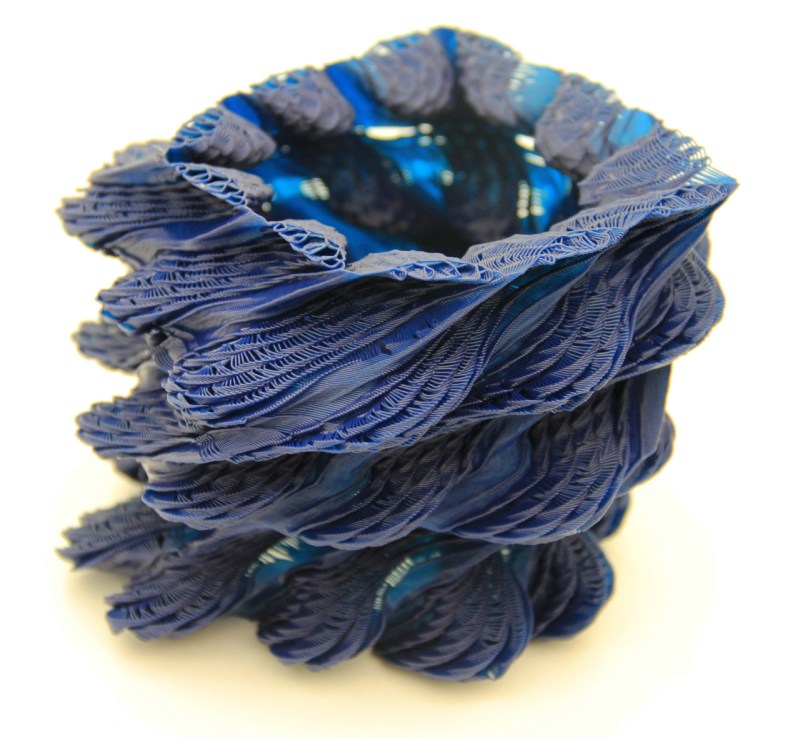Have you ever wondered what a song looks like? What it feels like in your hands?
Those odd questions have an answer that has taken shape over at [Reify], which has developed a way to turn sound waves into 3D-printed sculptures. These visualizations made manifest can be made from any audio — speeches, the ambience of a forest, classical music, a rocket launch — and rendered in coconut husk, plastic, bronze and more.
[Reify] also works in reverse — they are developing software that allows the observer to scan the sculptures and play back the audio that created it. It’s not apparent from the video or the website how [Reify] generates the sculpture from the sound byte — and especially scanning it back into audio considering the internal structures appear to be relevant pieces from the clip.
We could wax poetic about how humans have stored data over the ages: how the the long wisdom of stones has given way to the impressions of electrons, so it’s compelling to see a different kind of solid-state data storage system come back into play. And who says old formats like vinyl are dead?
If you have a specific clip you want to see rendered at home, we featured one method a few months ago.
[via Colossal. Thanks for the tip Itay Ramot!]















I’m pretty sure that’s what vinyl is though, 3D printed music. Z dimension a tad small to appreciate fully visually, but your stylus knows about it.
That leads to the interesting idea of producing a record with a greatly oversize Z-range… Anyone with a circular print bed up for it? :)
Looks like they’re printing the nifty waveform displays that .mp3 music-players’ visualizers produce. Love the puffery on the website though.
It could also be an 18 month stale April fools joke.
Its not what a song looks or feels like though is it because songs aren’t tangible objects.
you could interpret digitised audio in an a practically infinite number of ways to print a paperweight like this.
Here’s my interpretation of the 50 greatest musical works of all time in DRM format…
https://youtu.be/t0I4mTEdAf8
How does one get snow in digital? Snow is random noise interpreted as video. With no digital stream there is nothing to display.
The idea of a video codec is to use as little data as possible. This means that each combination of bits should code for a possible video. In practice many video formats sacrifice a small percentage of their efficiency for some robustness: a known code in a known place in the datastream. But if you remove the checks for that, or maybe have a player that will play what it’s got while waiting for the sync code, random digital data will play just fine as a video….
+1
They’re heeeere….
Hmm, being a hollow vase-like structure, I’d shine a laser through it to a sensor on the inside or outside, and have the varying opacity carry the data.
Or or, you could have a mirror behind it and have it return the laser, and maybe use a motor to turn it round, and…
Unless the music is already stored in the phone and the object only acts like a QR code that references to the saved recording, I’m unsure how else this would have worked.
Whatever it is, it looks great.
This looks like someone’s industrial design senior project. All fancy video and no ‘there’ there.
It’s a lot simpler, and more fun, to let some weed take care of the audio visualization.
I enjoy how allowing the user to add distortions to the audio print whatever it is that it would give a cop out to how terrible it would actually work. As long as they’re selling it as art I have no problem with this snake oil.
I did 2D versions of this in high school ’70.